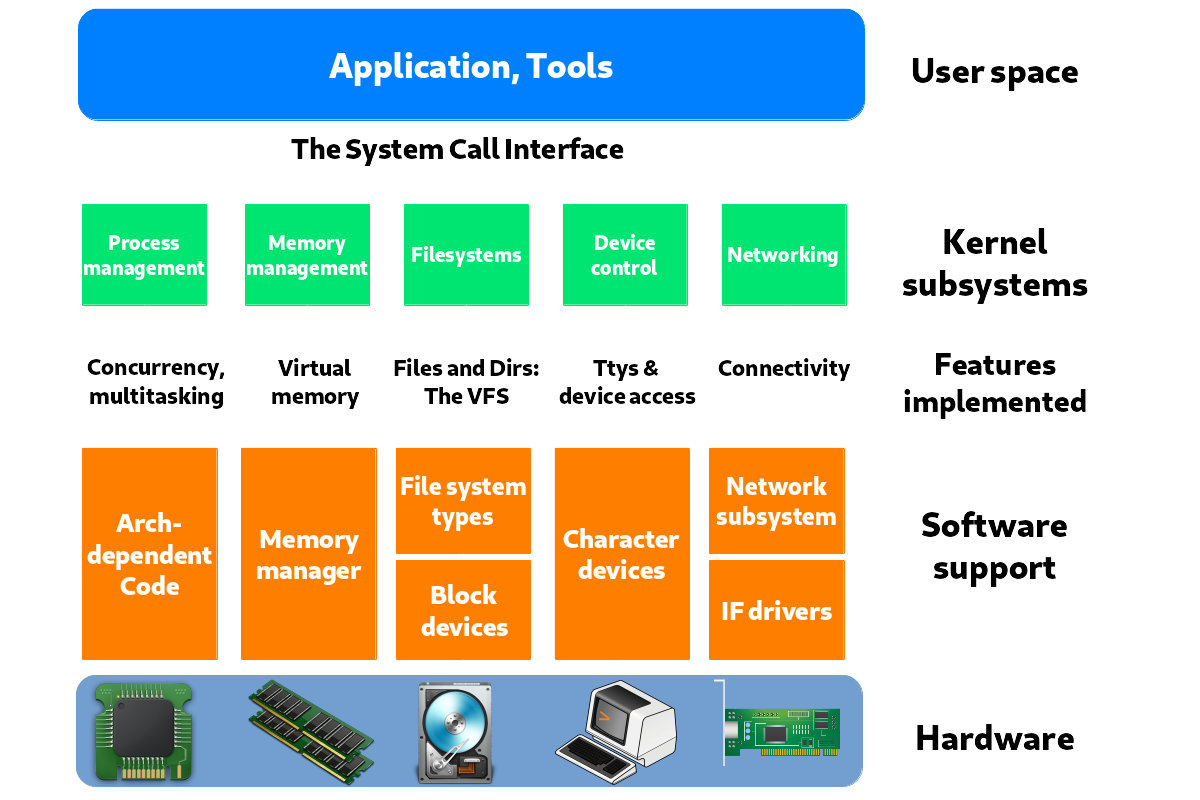| The figure shows the components of a generic OS kernel, which is the core of the operating system that manages the resources and interacts with the hardware. |

|
- API or system call interface: The application program interface (API) that allows the user programs to communicate with the operating system.
- User interface: It provides the user with a way to interact with the system, such as graphical or command-line interface.
- File system: The component that organizes and stores the data on the secondary storage devices.
- Hardware devices: The physical components of the computer system, such as CPU, memory, disk, keyboard, mouse, etc.
- Device drivers/control: The software modules that enable the operating system to control and communicate with the hardware devices.
- Networking: It is to simplify networking including an implementation of TCP/IP (standard Internet communications protocols) to automatically enable the Ethernet or wireless interface for a device.
- Memory management: Memory can be divided into registers, cache and RAM (random access memory) based on their speed, size and location.
| When nothing is going right, go left. |